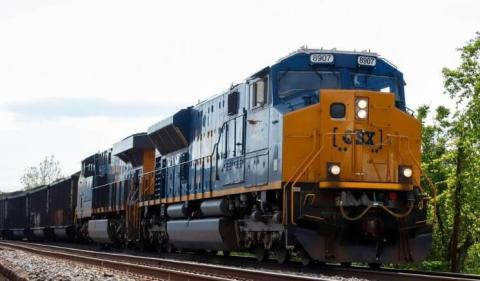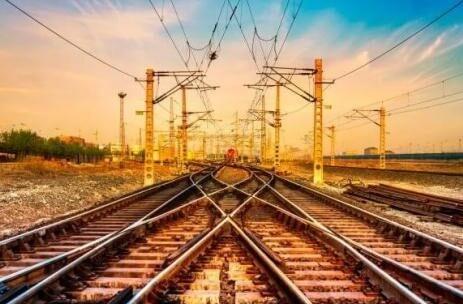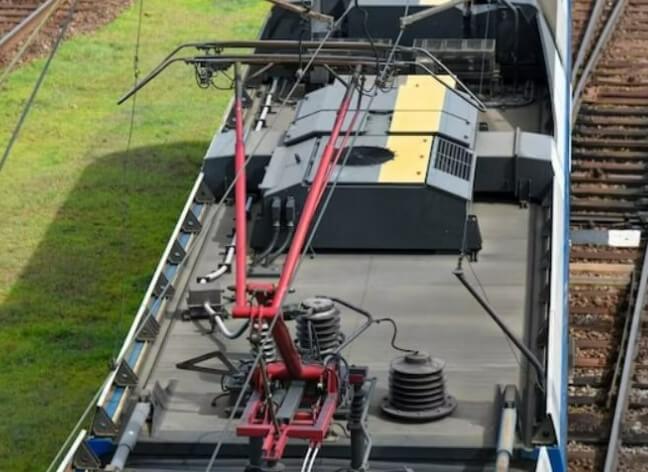
The evolution of railway power systems has been a cornerstone of modern transportation, enabling efficient and reliable rail services across the globe. As urbanization and industrialization have surged, the demand for sustainable and high-capacity transport systems has intensified, leading to significant advancements in railway infrastructure. Central to this infrastructure are railway power systems and overhead lines, which play a critical role in the safe and efficient operation of trains. This blog will explore the intricate details of these systems, focusing on their importance, components, challenges, and the innovations that are shaping the future of rail transport.
The Importance of Railway Power Systems
Railway power systems are the backbone of electric railways, supplying the necessary energy to operate trains. Unlike traditional diesel-powered trains, electric trains rely on external power sources, typically provided by overhead lines or third rail systems. These systems not only reduce the carbon footprint of rail transport but also offer higher efficiency and reliability.
Environmental Impact and Sustainability
Electric railways powered by efficient railway power systems contribute significantly to reducing greenhouse gas emissions. With the growing concern over climate change, the shift towards electric trains is a step in the right direction. Unlike diesel engines, which emit a considerable amount of CO2 and other pollutants, electric trains produce zero emissions at the point of use. This shift aligns with global sustainability goals and helps cities reduce their overall environmental impact.
Efficiency and Reliability
Railway power systems are designed to ensure a continuous and reliable power supply to trains, minimizing disruptions and delays. Electric trains powered by these systems can accelerate and decelerate faster than diesel counterparts, improving overall efficiency. Additionally, electric trains are generally quieter and require less maintenance, further enhancing their reliability.
Components of Railway Power Systems
A comprehensive railway power system comprises several critical components, each playing a vital role in ensuring the efficient operation of electric trains. Understanding these components is essential for grasping the complexity and importance of railway power systems.
1. Traction Power Substations
Traction power substations are the heart of railway power systems, converting high-voltage electricity from the national grid into a form suitable for railway use. These substations typically step down the voltage to the required level (e.g., 25 kV AC or 750 V DC) and distribute it to the overhead lines or third rails that supply power to the trains. Substations are strategically located along the railway network to ensure a consistent power supply, even during peak usage.
2. Overhead Lines
Overhead lines, also known as catenary systems, are one of the most common methods of delivering power to electric trains. These lines consist of a series of wires suspended above the tracks, which transmit electrical energy to the trains via a pantograph. The pantograph, mounted on the train's roof, makes contact with the overhead wire, drawing power as the train moves.
The design of overhead lines is critical to the efficiency of railway power systems. They must be able to withstand various weather conditions, resist wear and tear, and maintain consistent electrical conductivity. The height and tension of these lines are carefully controlled to ensure stable and reliable power delivery.
3. Third Rail Systems
In addition to overhead lines, some railway systems use third rail systems to deliver power. A third rail is an additional rail placed alongside or between the standard tracks, carrying the electrical current required to power the train. The train collects power through a shoe that slides along the third rail. Third rail systems are commonly used in urban transit networks, such as subways and metro systems, due to their compact design and ease of installation.
However, third rail systems are typically limited to lower voltage levels compared to overhead lines, which can impact the speed and capacity of the trains. Safety is also a concern, as the third rail is exposed and poses a risk of electrocution.
4. Power Cables and Transmission Lines
Power cables and transmission lines are integral components of railway power systems, responsible for carrying electricity from the substations to the overhead lines or third rails. These cables must be capable of handling high voltages and currents, while also being durable enough to withstand environmental factors such as temperature fluctuations and physical stress.
The layout of transmission lines and cables is carefully planned to minimize losses and ensure efficient power delivery. In some cases, underground cables may be used in densely populated or environmentally sensitive areas to reduce visual impact and avoid interference with other infrastructure.
5. Control and Monitoring Systems
To ensure the safe and efficient operation of railway power systems, sophisticated control and monitoring systems are employed. These systems oversee the distribution of power, detect faults or abnormalities, and make real-time adjustments to maintain optimal performance. Control centers are staffed with operators who can intervene in the event of an issue, such as a power outage or equipment failure.
Monitoring systems also play a crucial role in maintenance, providing data on the condition of various components and predicting potential failures before they occur. This proactive approach helps to minimize downtime and extend the lifespan of the railway power systems.

GET IN TOUCH
The ultimate solution for reliable power control! call us at 276-285-3841
Challenges in Railway Power Systems
While railway power systems are essential for modern electric railways, they are not without challenges. These challenges must be addressed to ensure the continued reliability and efficiency of rail transport.
1. Infrastructure Aging and Maintenance
Many railway networks, particularly in developed countries, have been in operation for decades. As a result, much of the infrastructure, including railway power systems, is aging and requires regular maintenance or replacement. Aging infrastructure can lead to increased downtime, higher maintenance costs, and a greater risk of system failures.
To address this challenge, railway operators must invest in regular inspections, preventive maintenance, and infrastructure upgrades. This may include replacing outdated equipment, reinforcing overhead lines, or upgrading traction power substations to handle increased loads.
2. Capacity and Demand Management
As urban populations grow and the demand for rail transport increases, railway power systems are under greater strain to meet capacity requirements. Ensuring that these systems can handle peak demand without compromising performance is a significant challenge. This requires careful planning and investment in system upgrades, such as increasing the capacity of substations or enhancing the efficiency of power distribution.
3. Environmental and Weather-Related Factors
Railway power systems are exposed to a variety of environmental factors, including extreme weather conditions, which can impact their performance. For example, overhead lines may be damaged by strong winds, ice, or lightning strikes, leading to power outages and service disruptions. Additionally, temperature extremes can affect the conductivity and durability of power cables and other components.
To mitigate these risks, railway operators must implement robust design standards and invest in weather-resistant materials and technologies. Regular inspections and maintenance are also crucial to identify and address potential vulnerabilities before they lead to significant issues.
4. Integration with Renewable Energy Sources
As the push for sustainability grows, there is increasing interest in integrating renewable energy sources, such as solar or wind power, into railway power systems. While this presents an opportunity to further reduce the environmental impact of rail transport, it also poses technical challenges. Renewable energy sources are often intermittent and may not provide a consistent power supply, which could affect the reliability of the railway system.
To overcome this challenge, railway operators must explore innovative solutions, such as energy storage systems or hybrid power systems, that can complement renewable energy sources and ensure a stable power supply.

GET IN TOUCH
The ultimate solution for reliable power control! call us at 276-285-3841
Conclusion
Railway power systems and overhead lines are integral to the operation of modern electric railways, providing the energy needed to power trains efficiently and sustainably. As the demand for rail transport continues to grow, these systems face a range of challenges, from aging infrastructure to environmental factors. However, with the advent of new technologies and innovations, the future of railway power systems looks promising.
By embracing smart grid technology, energy storage solutions, high-efficiency traction systems, and advanced monitoring tools, railway operators can enhance the performance and reliability of their power systems. Additionally, the integration of renewable energy sources and the exploration of wireless power transmission offer exciting possibilities for the future of electric railways.
As we move towards a more sustainable and connected world, the role of railway power systems will become increasingly important. By investing in these systems and adopting cutting-edge technologies, we can ensure that railways continue to be a vital and efficient mode of transportation for generations to come.
Our Expert Services
Swartz Engineering provides top-quality products to meet our customers' needs. We also make sure our products work reliably and safely. Our products include:
- Type 76 DC Relay
- Type 82 DC Relay
- Swartz Engineering’s Type 64 Ground Relay
- Type 32 Reverse Current Relay
- Type 150 DC
- CSM Shield Monitor
- Metal Oxide Surge Arrestors
- Transducers
- MVIS SL Slim-line Contactor
- Fully-tested Power Control Rooms
- Swartz Engineering’s Portable Substations
CONTACT US
Take the first step towards powering up your operations! call us at 276-285-3841
